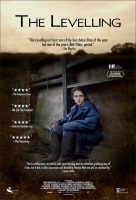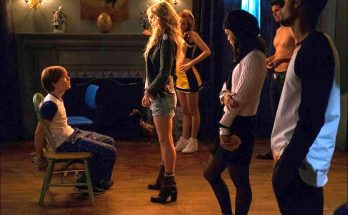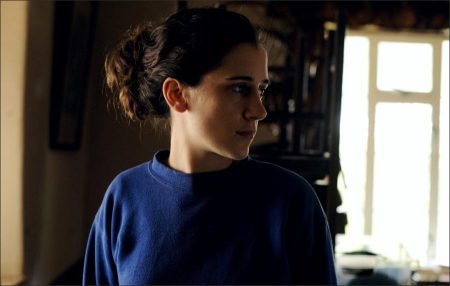
Somerset, October 2014. When Clover Catto (Ellie Kendrick) receives a call telling her that her younger brother Charlie (Joe Blakemore) is dead, she must return to her family farm and face the man she hasn’t spoken to in years: her father Aubrey (David Troughton). She is shocked to discover her home changed forever by the devastating floods that destroyed the area six months earlier, and Aubrey a tormented shadow of his former self.
As she learns what has been going on in her long absence she and her father forge a new understanding, but can it withstand the troubles that they face on the ravaged farm as well as the truth of what drove Charlie to take his own life?
The Levelling is a 2016 British drama film directed by Hope Dickson Leach and Ellie Kendrick, David Troughton, Jack Holden and Joe Blakemore. It was selected to be screened in the Discovery section at the 2016 Toronto International Film Festival.
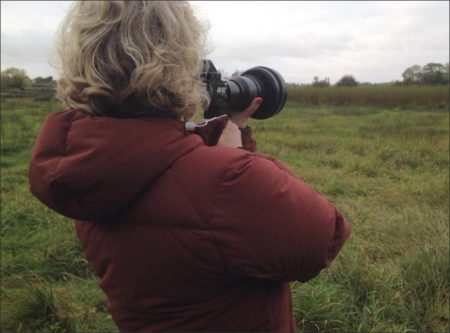
Five Questions for The Levelling Director Hope Dickson Leach
In 2007, Hope Dickson Leach landed with Her darkly comic brother-sister relationship drama, The Dawn Chorus — about siblings who recreate the plane crash that killed their parents — had been tearing up the festival circuit, and the Columbia Film School grad was developing a feature about a teenage girl who blames Princess Diana for her parents’ divorce. Dickson Leach had been working as an assistant for Todd Solondz on his film Palindromes, and her work was occasionally thought of as having the same satiric stripe.
Now, it’s a nearly a decade later, and Leach, who moved from New York to Edinburgh, is arriving in Toronto for the premiere of her debut feature. Entitled The Levelling, it’s part of the Toronto International Film Festival’s Discovery section, and from its catalog description, which uses words like “unadorned,” “careful” and “respectful,” it would seem to quite different from The Dawn Chorus and that Princess Diana project. Indeed, The Levelling is a film about grief, a family and a community struggling in the wake of the floods that hit Somerset, England, in 2014. Below Dickson Leach talks about how she almost quit filmmaking, how she adapted to a microbudget, and why she went for an emotional nakedness rather than dark comedy.
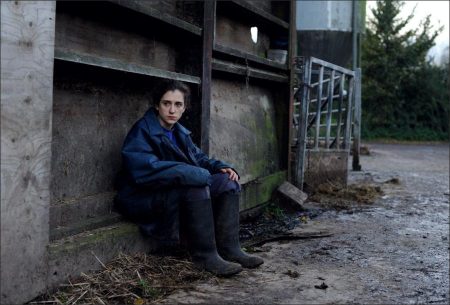
Let’s start by catching up. When we last wrote about you at Filmmaker, it was 2007, and you landed on our 25 New Faces after your short, The Dawn Chorus. At the time, you were working on a feature about Princess Diana. Your new film is obviously not that. Can you update us what you’ve been up to the last decade? How did your path to this first feature differ from the path you imagined for yourself back then?
Dickson Leach: I returned to the U.K. after The Dawn Chorus and graduating from Columbia. Despite the success of that short, I still had to prove myself to U.K. financiers, and so I spent a couple of years making more shorts within the industry there. I also found myself on the hunt for new collaborators, so it was like a reset button had been pressed.
At that point people were still making first features for over or around £1 million — that was the budget of the project you mentioned — and I felt I had some momentum. So, I was determined to push on and make it happen. But as the months and years went by, and the project struggled in development hell, suddenly micro budget features became a thing. A short wasn’t enough, you had to make a micro budget feature, and then crowdfunding arrived and suddenly there wasn’t any excuse not to make one.
Except for me at that point there was.I had started a family, and not only had that changed me and my energy levels (vomiting for nine months, and then another nine months, and not sleeping for four years), but it meant I had commitments and priorities which prevented me from raising £20,000 and just shooting a feature like so many of my peers were doing.
I came very close to giving up on the whole thing. I had an epiphany one night at 3:00 AM while breastfeeding that I would just get another job! I could be a receptionist! Or a spy! I’d always wanted to be a spy. Excitedly, . I told my husband who smiled kindly and then gently reminded me how much I love making films, and that I would be miserable not doing it. (Proved by the fact I was, in fact, miserable not doing it). He suggested that maybe I should just do it in a way that would make me happy.
So I swallowed my pride and rebooted again. The trajectory I thought my career was going to take hadn’t happened, but I had some great allies and I just had to find a new way to make work. I started talking to people about making films while having children, as I just couldn’t find what I needed to help me get through it, and those conversations became something new: Raising Films.
I found a group of extraordinary women who thought the issue of having children was something that wasn’t talked about in the industry, and was perhaps a key issue in the low numbers of women in the industry. And we thought: what can we do about it? So we have created a community online, we are gathering testimonials and interviews, which serve both as archive and inspiration, and we are also campaigning for things to change. Both in the industry and in society. It feels wonderfully empowering and a privilege to be part of such an important conversation at the time when inclusivity is finally being addressed in a practical and active way in the industry.
Just as that happened, I got the commission to make The Levelling, so suddenly everything started getting busy again. Which is when I’m happiest. I feel incredibly proud and incredibly lucky to find myself where I am now — a filmmaker, campaigner and a mother. It’s a struggle, but an important one, and has clarified my priorities.
Tonally, The Levelling, with its treatment of suicide within a family and set against the floods in West England, seems like it’s working in a different register than your blackly comic shorts. Is that the case, and how do you feel your style evolved or changed in order to confront this subject matter? And, on a personal level, what was the inspiration for the film?
Dickson Leach: Tone is a hard thing to define, and while I felt my shorts had a specific tone, I think it was tricky for financiers to imagine that tone at feature length. Inevitably my “blackly comic” work (on the page) became darker at moments, and funnier at others, and people struggled with that. So those scripts never came to anything. I still have it in me, and I hope I’ll get to make something really strange one day. But this story was purer, and as such didn’t need any such scaffolding around it.
As a filmmaker that felt really vulnerable — and honestly I’m a little scared to show this film to people. What if they don’t feel anything and there’s nothing else clever-clever for them to respond to? What if I’ve failed to connect to an audience where it really matters? But I think it’s also been very important for me to bare everything emotionally at this point in my career. To strip back to the basics of storytelling and prove my chops, and from there any other devices I want to add in, I can do so safely in the knowledge that I won’t neglect the emotional truth at the heart of the story.
This project was something that had been sitting in my brain for a while — as a family drama. I had envisioned it as an ensemble piece, which allowed me to put in devices that I enjoyed. But as I developed it it became clear that it would only be emotionally satisfying if I focused on the central relationship, between the father and daughter.
So, as you say, perhaps the shift was dictated by the subject matter. It felt like a progression from some of my shorts — with the focus on grief — and yet I really wanted to explore what it felt like to be faced with a choice, an obligation to effect change whilst dealing with a tragedy. That short period of time after something awful happens when everyone is laid bare and there is an opportunity to rewrite rules and redefine relationships, but the opportunity is so rarely taken — this film was about that.
As someone who went to Columbia and worked for Todd Solondz, you are well aware of the U.S. micro and lower-budget world. You made this feature through Creative England’s iFeatures3 program? Tell us about conceiving — or adapting — the film to fit your budget, and how does ultra-low-budget filmmaking differ in England as opposed to the U.S.?
Dickson Leach: I wanted to go to film school in the U.S. partly because I grew up in love with early indie cinema — Jarmusch and Hal Hartley and of course Todd Solondz’s earlier work. But partly because I felt there was an attitude to filmmaking in the U.S. that just said, “We can do this, let’s do it.” In the U.K. there is (or there has been for a long time until crowdfunding came along) a far greater inclination to seek permission to make work.
That might be because we have national funding in place, and so films can occupy a space between the purely commercial and the entirely personal. We are subsidised in the name of culture. I think many filmmakers think their work exists in that space, and so it feels incredibly rewarding to actually be given “soft” money to make your work that way. However because that money exists, and that stamp of approval exists, if you don’t get it, it is hard to find other ways to raise money. Financiers want to know why you didn’t get it. In addition, the U.K. isn’t a large enough market to justify a biggish budget — you are always beholden to either co-productions, or a pressure to think of the (far larger but language-sharing) U.S. market.
People are now making far more independent, ultra-low-budget films than they did in the past. Obviously this is in a large part due to crowdfunding and better technology, like everywhere else, but as with everywhere else the question then becomes of what happens to the film. One of the most fantastic things about making a film through the iFeatures scheme was not only that we got the money in one lump (we didn’t have to piece the finance together) but also that we got a BBC TV broadcast as part of that package. This opens up so many doors in terms of viability when attracting cast, collaborators and even locations.
Since I had known what the budget was for this scheme, I wrote the project accordingly. I kept locations and cast as low as possible. I wrote for available light, changeable seasons, and put plenty of firelight into scenes. I knew how valuable a supportive community could be when shooting on location, and the residents and farmers of the Somerset Levels had been through so much, and had shown themselves so keen to get their story told, that I felt hopeful we would have a good time working there — as we did.
Tell us about the development of the film’s visual style, from your choice of camera to how you worked to make the film cinematic given your budget?
Dickson Leach: Whilst developing the script, in the competitive environment of iFeatures (where projects are literally competing for the commission), I knew I had to write something that wasn’t just telly, which drama can so often be. So I pushed hard to think about films that were like mine that were pure cinema. I thought about Bergman and Haneke and Dumont and Reichardt. I built in a sequence that was dreamlike, surreal, that brings the whole world of the film together. It was absolutely something I was concerned with right from the beginning.
My cinematographer Nanu Segal and production designer Sarah Finlay had both worked at this budget level before, and both came on board with the most brilliant ideas and understanding of how I saw the film. We knew that the locations were going to give us so much value, and so having their input into choosing the locations meant I knew we were going to get beauty at the budget we needed. As well as the house the land is a character in the film, and so I did a huge amount of driving around the area trying to find the best spots to tell the story. Clover, the protagonist, has to fall in love with the land, and her home, despite them both being a part of the story behind what happened to her brother. I wanted the landscapes to ache, to look painterly and nostalgic.
We shot as autumn arrived, so the leaves were turning, but the growth still looked saturated and heavy. There is obviously a lot of water in the film — I tried to put it in wherever possible (without actually being able to show the floods — damn budget!). We found out that the swallows would be gathering and performing murmurations at that time of year, so we sought them out.
We shot on an Arri Alexa. Nanu and I wanted to shoot ArriRaw, but at the budget we had the data management was too cumbersome, so we shot some scenes ArriRaw and most Pro Res. We used lenses that Dumont uses a lot — Hawk anamorphics. They were gorgeous.
Finally, what did you as a filmmaker learn about the subject of grief by making this film?
Dickson Leach: In my shorts I had worked with the idea of grief as static and disabling, which it can be. I couldn’t do that for a feature, not only because it would have been boring and I wanted to tell a story, but also because I felt like I wanted something redemptive. Death is something you experience more and more as you get older, and thus there is a sort of imperative to learn from it, especially if you don’t want to be floored by it each time you encounter it.
So I think, being a little older now, I wanted to say something more complex and promising about grief — about its opportunities, and the sort of magic space that it offers. Giving Clover a question to answer, and making her the kind of person who won’t give up, meant that I had to go with her on this hard journey, and it was either going to end with everyone lying dead in the mud (which did happen in one draft) or with something more redemptive. Ultimately the former didn’t feel honest, or like something I would want to watch, so I went the other way.
The Levelling (2017)
Directed by: Hope Dickson Leach
Starring: Ellie Kendrick, David Troughton, Jack Holden, Joe Blakemore
Screenplay by: Hope Dickson Leach
Production Design by: Sarah Finlay
Cinematography by: Nanu Segal
Film Editing by: Tom Hemmings
Costume Design by: Tess Loe
Art Direction by: Charlotte Ball
Music by: Hutch Demouilpied
MPAA Rating: R for language and brief nudity.
Distributed by: Monterey Media
Release Date: March 24, 2017
